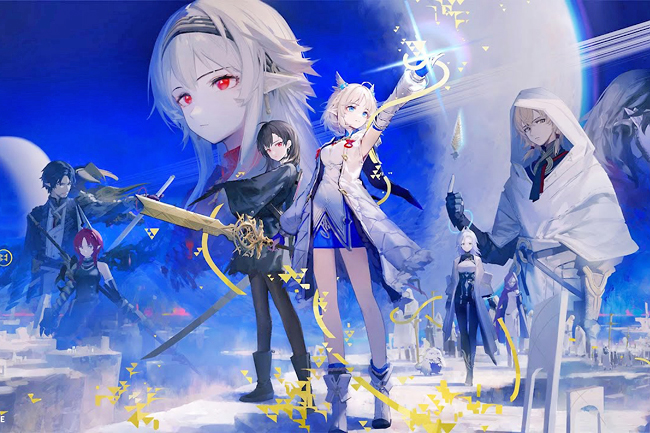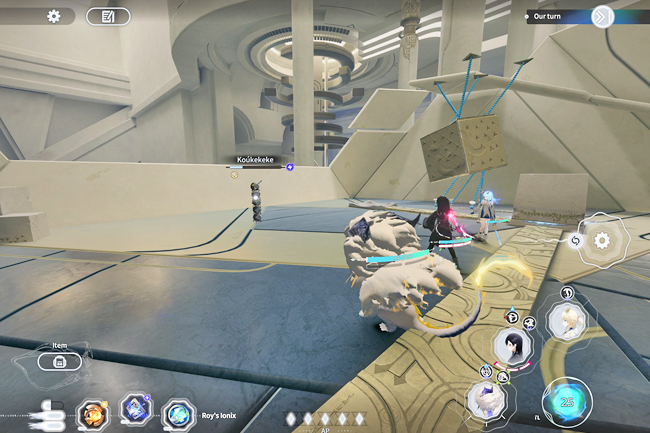In a mobile gaming universe dominated by microtransactions, energy meters, and luck-based mechanics, finding a premium title that doesn’t pander to the gacha grind feels almost mythical.
For years, app stores have been flooded with free-to-play juggernauts that lure players in with no upfront cost – only to sink their claws in through daily login rewards, limited-time banners, and ever-dangling carrots of rare loot. But amidst this cash-driven galaxy, a lesser-known title called Ex Astris quietly defies convention – offering not just a game, but an experience that dares to value storytelling, strategy, and substance over spending.
Released quietly earlier last year by Nous Wave Studios, a relatively unknown development team, the game is a premium, paid title without the strings of gacha mechanics or microtransactions.
This was a bold move, especially considering that the studio is a subsidiary of Hypergryph, which is under Gryphline, a Chinese publishing powerhouse best known for its wildly successful gacha game Arknights.
For a company that has built its empire on the gacha model, backing a full-fledged premium mobile game felt almost like a rebellious fresh air in the gacha-dominant market.
Despite being the maiden and currently only project from Nous Wave Studios, the game comes packed with surprising polish akin to that of AAA games.



These include the AAA-quality visuals that push the mobile platform to its limits, with gorgeously animated cutscenes, richly detailed environments, and character designs that wouldn’t look out of place on a console.
From the anime-inspired character design to the outrageous colour palette and design of the world, Ex Astris would not look out of place amongst the AAA games found on higher-end consoles.
This visual excellence is matched by its unexpectedly engaging turn-based combat, which is a system that feels deeply refined and thoughtfully designed.
The heart of the game lies in this combat system, which draws inspiration from cult favourites like Valkyrie Profile.
Each battle involves a party of three characters, each of whom can be assigned unique attacks that can be strategically chained together during combat.
Chaining combos between characters results in higher damage and special effects, requiring players not just to plan and strategise which moves to assign to each character but to execute them with precision.
New characters are also introduced throughout the player’s journey in the game, each offering a unique playstyle that plays into the hybrid turn-based combat.
This is also true during the enemy’s turn, as players are rewarded by executing parrying moves when the enemy’s attacks are just about to hit, which not only negates the damage but also deals slight damage to the enemy.
It’s a hybrid of real-time rhythm and traditional turn-based mechanics that makes the game a refreshing take on the mobile platform, one that is filled with the bog-standard gacha and free-to-play games that players of the genre can come to know. Furthermore, the gameplay’s learning curve is steep but rewarding, as the more time players invest in mastering combo timing and attack synergy, the more satisfying the combat becomes.
It’s in this aspect, that this delicate dance between tactics and timing, is where the game truly shines.
Despite these exemplary gameplays and design, the game does falter, as evident in the story as it can fail to grab the player’s attention from the get-go, which does not help with the one-dimensional characters from the personification of stoic found in Yan, to the generic bubbly character of Vi.
While linear storytelling is reflected throughout the game, players are given limited choice in movement, with exploration kept to a minimum and levels being relatively linear with few optional paths to explore.
This is not made any better as exploration requires some platforming, which is barebones at best with the exclusion of a dedicated jump button. Rather, players have to rely on a clucky automatic jump that can be frustrating to use during exploration.
But if players can overcome these platforming setbacks, these optional paths do have the benefit of leading players to uncover plenty of supplementary lore through text and collectables, in addition to upgrade materials used to level up their characters.
Another inconvenience that may plague the player’s experience is the inability to pair and use controllers to play the game, as players are stuck with the standard touchscreen interface, which may be serviceable at first but would have benefited from an option for controller support.
In the fast-paced world of mobile gaming, premium titles such as Ex Astris face an uphill battle, as, despite its quality and the pedigree of its parent company, the game has struggled to break through the clutter of the mobile gaming market.
Yet, there is an enduring charm about this game as it stands opposed to an industry that often hinges on server uptime, live service gameplay, and seasonal profitability.
Ex Astris may never dominate the charts or set mobile trends, but it’s a beautifully made outlier and has quietly become a cult classic for passionate fans of the game, which will be fondly remembered as the mobile gaming world continues to grow and develop well into the future. – Daniel Lim


